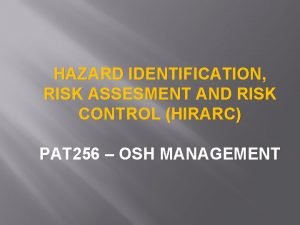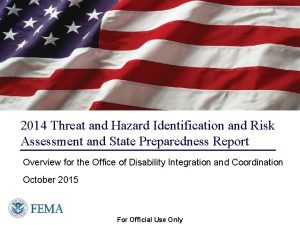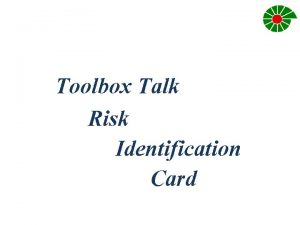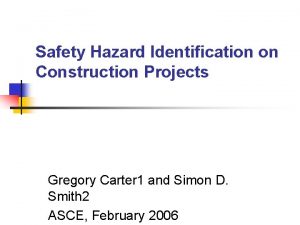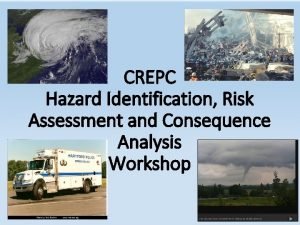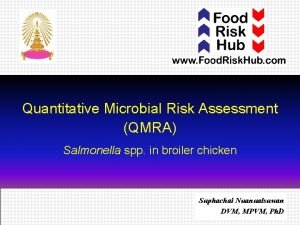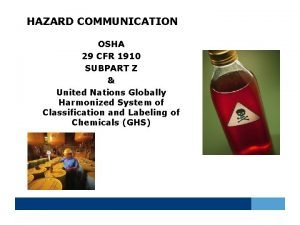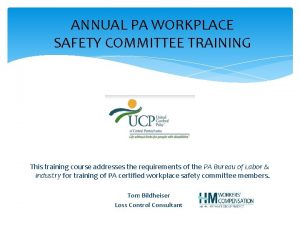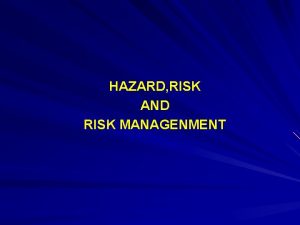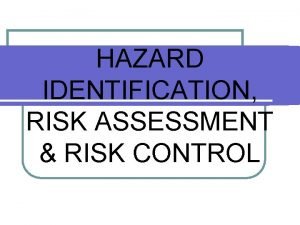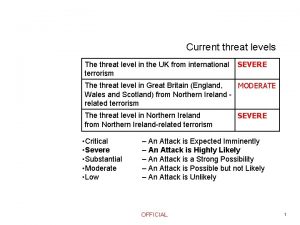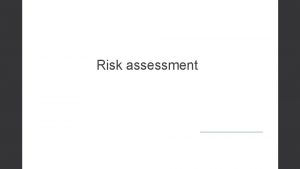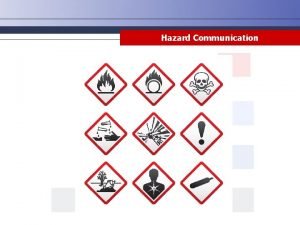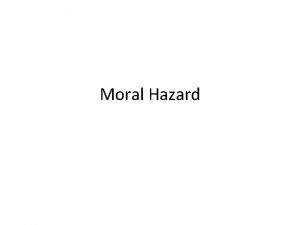2014 Threat and Hazard Identification and Risk Assessment












- Slides: 12

2014 Threat and Hazard Identification and Risk Assessment and State Preparedness Report Overview for the Office of Disability Integration and Coordination October 2015 For Official Use Only

Overview § Background on the Threat and Hazard Identification and Risk Assessment (THIRA) and State Preparedness Report (SPR) § Guidance on Using THIRA/SPR Data § The SPR Objective Measures Project Overview Sample Objective Measures For Official Use Only Presenter’s Name June 17, 2003 2

THIRA Steps and Outputs For Official Use Only Presenter’s Name June 17, 2003 3

The THIRA/SPR Methodology For Official Use Only Presenter’s Name June 17, 2003 4

Step 1: Current Capability Ratings Respondents assess their current capabilities relative to their THIRA targets for the 31 core capabilities across the five POETE elements: Planning, Organization, Equipment, Training, and Exercises 5 POETE Internal Ratings X 31 core capabilities = 155 separate ratings per state For Official Use Only Presenter’s Name June 17, 2003 5

Step 2: Context for Capability Ratings § Assign priority levels § Describe their capability gaps through a free text option and Frameworks-based standardized gap descriptions § Respondents also report their views on Federal gap responsibility and validate their assessment through real-world events or exercises For Official Use Only Presenter’s Name June 17, 2003 6

How the THIRA and SPR Work Together § The SPR is an annual self-assessment of each state and territory’s preparedness capabilities § Based on targets set during the preceding THIRA process, states and territories assess their preparedness across all 31 core capabilities outlined in the National Preparedness Goal § The SPR also provides information on state and territory: Priorities across core capabilities Recent advances and core capabilities in greatest danger of decline Descriptions of capability gaps and views on the expected roles of themselves and the Federal Government for addressing those gaps § The SPR’s consistent methodology enables trend analysis since 2012 § FEMA shares THIRA/SPR results across the Federal Government to promote data-driven decision making For Official Use Only Presenter’s Name June 17, 2003 7

Why Adjust SPR Methodology? NPAD continually looks for opportunities to make the SPR more objective while balancing the reporting burden for jurisdictions § Challenges with the current methodology Capability ratings cannot be verified independently States and territories determine their 1 -5 ratings using various methodologies and likely have different interpretations the ratings scale Because jurisdictions evaluate themselves against their own THIRAs, FEMA cannot compare SPR ratings across jurisdictions § States and territories have expressed interest in identifying a means of comparing their preparedness capabilities to similar jurisdictions § FEMA and other Federal agencies desire more specific information on state and territory capabilities to support decision making § Congress and the Government Accountability Office are encouraging FEMA to develop less subjective indicators of state preparedness For Official Use Only Presenter’s Name June 17, 2003 8

SPR Objective Measures Project Overview § Introduce a set of “objective measures” that are more specific than the 1 -5 ratings and rely on verifiable facts Jurisdictions will be able to point to specific evidence to verify responses Measures will be based on existing national-level doctrine and best practices in assessing preparedness across the country Measures will be nationally applicable, unlike performance standards that may be tailored to the unique requirements of an individual jurisdiction § NPAD is developing measures for each of the common core capabilities and those within the Response and Recovery mission areas for implementation in the 2016 SPR § The SPR will remain a self-assessment of state and territorial capabilities and NPAD will maintain the 1 -5 capability ratings Measures will highlight a few key elements of each core capability, they will not comprehensively cover all relevant activities For Official Use Only Presenter’s Name June 17, 2003 9

Illustrative Example § Current SPR asks for broad, capability ratings on a 1 -5 scale, for example: Critical Transportation - Planning 1 2 3 No plans/annexes exist Some plans/annexes exist 4 5 Plans/annexes are complete but complete and complete, up-torequire an updated within the date, and verified past 5 years § SPR objective measures will focus on narrow aspects of a capability, for example: Have the state/territory and all applicable jurisdictions pre-identified transportation assembly points that will be used during evacuations? N/A No Few Elements Some Elements For Official Use Only Most Elements Presenter’s Name Yes June 17, 2003 10

Criteria for Inclusion 1. Importance: Does the measure usefully inform a jurisdiction’s understanding of its level of ability in the core capability? 2. Understandable: Is the measure easy for emergency managers and homeland security practitioners to understand does the measure have one clear interpretation? 3. Targeted: Does responding to the measure lead the jurisdiction to identify objective, real-world evidence (that can be verified) to support its answer? 4. Scalable: Does the measure provide useful indicators for state and territorial governments of varying size and complexity? 5. Authoritative: Is the measure derived from national doctrine, policies, plans, or guidance or a widely accepted authoritative source? 6. Simple: Is the measure functionally simple to answer? 7. Actionable: Can state and territorial governments use the answer to the measure to inform leadership’s decision making? Can FEMA? For Official Use Only Presenter’s Name June 17, 2003 11

For Official Use Only Presenter’s Name June 17, 2003 12
 Hirarc form word
Hirarc form word Threat and hazard identification
Threat and hazard identification Liquidity measures
Liquidity measures Smart card toolbox
Smart card toolbox Safety hazard identification on construction projects
Safety hazard identification on construction projects Hazard identification table
Hazard identification table Hazard identification
Hazard identification Hazard identification
Hazard identification Hazard identification section of the sds
Hazard identification section of the sds Hazard identification
Hazard identification Hiraclite
Hiraclite Hazard identification
Hazard identification Identify hazards
Identify hazards
